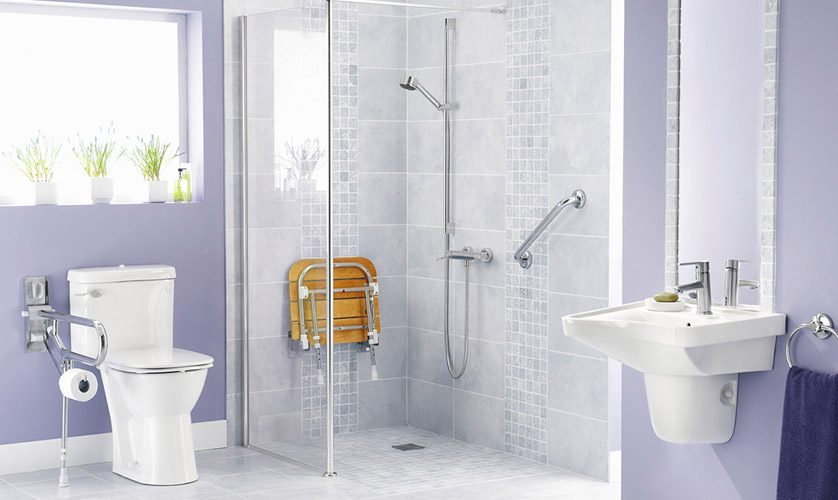
Creating an in-law suite presents a unique opportunity to add value and functionality to your home while addressing the needs of aging relatives. However, devising a plan that accommodates comfort, accessibility, and legal parameters requires thoughtful consideration. Here, we explore essential dos and don’ts of ensuring your in-law suite is both practical and welcoming.
Prioritize Accessibility and Safety
When designing an in-law suite, make sure the space is accessible and safe for elderly occupants. Incorporate wide doorways and hallways to accommodate mobility aids such as walkers or wheelchairs. The floor should be slip-resistant, and the bathroom space should be equipped with grab bars and a walk-in shower or tub to minimize fall risks. To ensure a comprehensive solution, consider hiring an accessible remodeler who specializes in designs tailored to the needs of older adults. Additionally, the suite’s location should ideally be on the ground floor to ease accessibility.
Legalities and Compliance
- Understand Local Zoning Laws. Before embarking on your in-law suite project, familiarize yourself with local zoning laws and building codes. Many areas have specific regulations concerning secondary living units, including limitations on kitchen features and the requirement of separate entrances. Ensuring compliance not only avoids legal pitfalls but also ensures the project’s long-term viability.
- Plan for Independent Utilities. While it’s tempting to extend existing utilities to the new suite, planning for independent heating, cooling, and electrical systems grants your in-law suite a degree of autonomy that enhances comfort and privacy. Consult with local experts to understand the best practices for implementing these systems within legal and practical boundaries.
Design Considerations
- Encourage Privacy While Keeping Connections. Designing an in-law suite is a delicate balance between providing privacy and maintaining a connection to the main house. Consider separate entrances but also incorporate shared spaces or an easy access point to foster family interactions while respecting everyone’s privacy.
- Flexibility for the Future. Your in-law suite should be adaptable to the changing needs of its occupants. Design with flexibility in mind, allowing the space to evolve from a senior-friendly living area to a guest house, home office, or even a rental unit. This not only ensures the suite’s continued use but also enhances the property’s appeal and value. Consulting a reputable home remodeler can help you plan for future versatility in your design.
- Aesthetic Harmony. Strive for aesthetic continuity between the main house and the in-law suite to create a cohesive look. This doesn’t mean mirroring designs entirely but rather incorporating architectural details or color schemes that link the spaces. It enriches the property’s overall appeal and ensures that the addition feels like an integral part of the home rather than an afterthought.
Common Pitfalls
- Overlooking Long-Term Needs. Do not design the suite solely for the current needs of its elderly occupants without considering future requirements or the potential for the space to serve different purposes. Incorporating universal design principles from the outset saves on costly renovations down the line.
- Cutting Corners on Construction. Opting for the lowest bid or skimping on materials can lead to a host of issues, from safety concerns to increased maintenance costs. Invest in quality craftsmanship and materials to ensure the space is safe, comfortable, and durable.
- Ignoring the Occupants’ Preferences. Remember, the suite is not just an extension of your home but a personal space for its occupants. Include them in the design process, paying close attention to their preferences, needs, and habits. This personal touch makes the suite feel like home.
Designing an in-law suite requires a detailed approach that encompasses legal compliance, accessibility, safety, and comfort. By adhering to the dos and avoiding the don’ts outlined above, you can create a functional, welcoming space that enhances your home’s value and your loved ones’ quality of life. Whether you’re accommodating aging parents or planning for the future, a well-designed in-law suite is a valuable addition to any home.
Let’s Start a Conversation!
If you’re ready to turn your vision of an in-law suite into a reality, let trusted general contractor DreamMaker Bath & Kitchen of Northwest Arkansas help guide you through the process. We utilize a distinctive, full-service remodeling approach focused on serving our clients from design through installation. Call us today at (479) 579-9800, or fill out our contact form to discuss your project. We proudly serve the areas of Rogers, Bentonville, Bella Vista, Springdale, Fayetteville, Cave Springs, Lowell, Elm Springs, Pea Ridge, Tontitown, Centerton, Gravette, Little Flock, and Prairie Creek.



